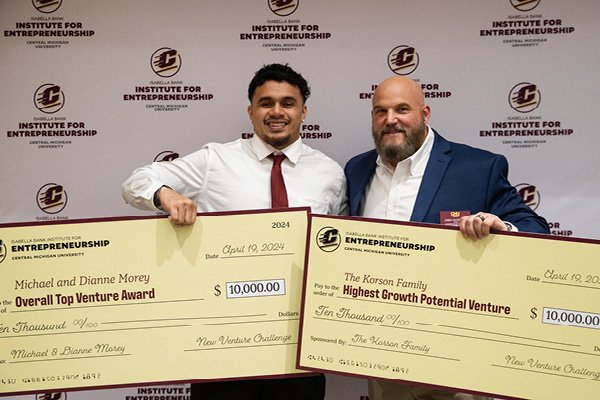
Start up
Passion. Potential. Pitches. Don't miss any of the 2025 New Venture Challenge excitement.
Tune in Friday, April 11 at 1 p.m. for great ideas and fierce competition. Then, join the judges, mentors, spectators and teams as they see who is going home with thousands of dollars in venture financing. The awards broadcast begins at 6:30 p.m. and one team will walk away as the overall best venture.
Central Michigan University’s College of Business Administration is the home of the Isabella Bank Institute for Entrepreneurship and the first Department of Entrepreneurship in the state of Michigan. We are a student-centric hub where experiential, curricular, and external entrepreneurial opportunities intersect.
Our mission is to maximize student success by fostering a campus-wide entrepreneurial mindset that promotes inter-disciplinary collaboration and the creation of new ventures.
We aim to create innovative programming, boost cross-campus and ecosystem collaboration and provide a comprehensive mentoring program.
Our institute provides extracurricular opportunities and is open to all undergraduate and graduate CMU students.
Are you interested in becoming an entrepreneur?
Every journey is unique. Explore the opportunities that interest you.
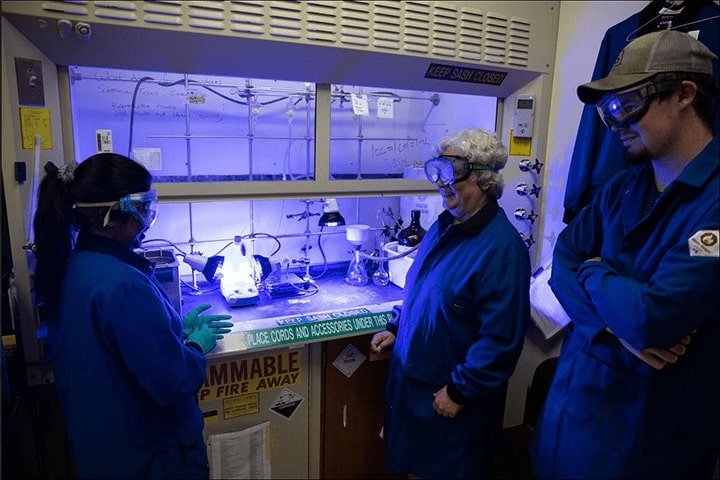
A polymer developed at Central Michigan University could provide a new generation of water filtration technology for the U.S. Department of Defense. It also has the potential to help solve stubborn water quality issues.
Three members of the chemistry and engineering faculty – Brad Fahlman, Itzel Marquez and Anja Mueller – are working on two types of filters using the polymer to remove ammonia and a form of arsenic in a water filtration system.
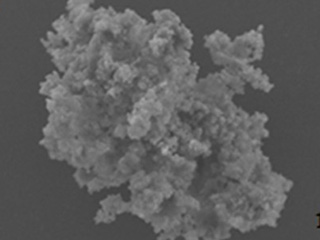
A graphitic material composed with the polymer would do the heavy lifting. The process begins in a lab where contaminants are imprinted on the polymer. Those contaminants are then removed from the polymer, leaving tiny indentations that fit the contaminant like a key in a lock, Fahlman said.
The CMU research team is looking at two applications to clean water. One involves a membrane, which is Mueller’s specialty. Marquez is working the other angle, mixing the polymer and contaminated water in a filter similar to a home pitcher.
The membrane theoretically would work faster, but that brings its own challenges, Mueller said. It must permit water to flow through it without breaking.
Synthesizing the polymer is also a painstaking process, said one of the graduate students helping to do the work. You could also say that it’s like a work of art.
Catriana Nichols is an engineering graduate student applying the polymer technology to the arsenic ion they’re targeting. She graduated from CMU in spring 2023 with a degree in engineering and started working in the lab that fall.
The process of making them is long, she said. It requires a lot of patience.
Nichols also loves art, and it was a process she learned in a ceramics course that helped her understand how to synthesize the polymers. In ceramics, you need to work the clay and heat it deliberately, she said.
“The polymer process is very similar,” she said. If you don’t follow a specific process, “it’s going to respond differently. If you overmanage it, it breaks.”
Her undergraduate education provided her with skills important to the research. She can construct and maintain equipment, and is trained in analyzing data and developing processes, she said. Understanding the importance of consistency has helped, too.
Among the challenges was learning to operate new equipment. Through this equipment, she can observe the polymer being used to trap contaminants. It’s a world she hadn’t previously considered.
“I didn’t know you could look at a pore the size of a microscopic particle,” she said.
The polymer looks something like a mini asteroid, with lots of folds and bulges. Those help it attract and trap other contaminants, Marquez said.
Once fully developed, the polymer filters would work as one component of a larger filtration system. Portability is part of the end goal, Marquez said.
The polymer technology has far-reaching potential, Fahlman said. It can be replicated to remove a wide range of contaminants, including some that are currently proving difficult like PFAS.
That would allow Nichols to turn a personal passion into a career. She wants to work in environmental quality. At the very least, the work she’s doing will provide critical benefits.
“I’m learning new skills I can take with me wherever I wind up next,” she said.
-----
DISTRIBUTION STATEMENT A. Approved for public release; distribution unlimited. OPSEC #: 8418
Explore special opportunities to learn new skills and travel the world.

Present your venture and win BIG at the New Venture Challenge.
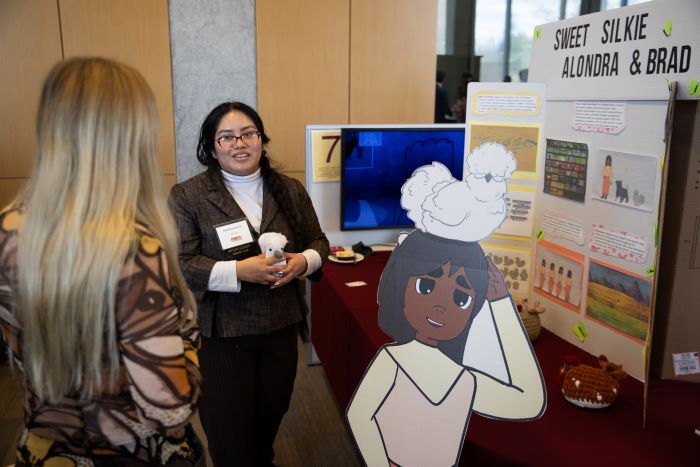
Boost your entrepreneurial skills through our workshops, mentor meetups and pitch competitions.

Learn about the entrepreneurship makerspace on campus in Grawn Hall.

Present a 2-minute pitch at the Make-A-Pitch Competition and you could win prizes and bragging rights!

Connect with mentors and faculty who are here to support the next generation of CMU entrepreneurs.
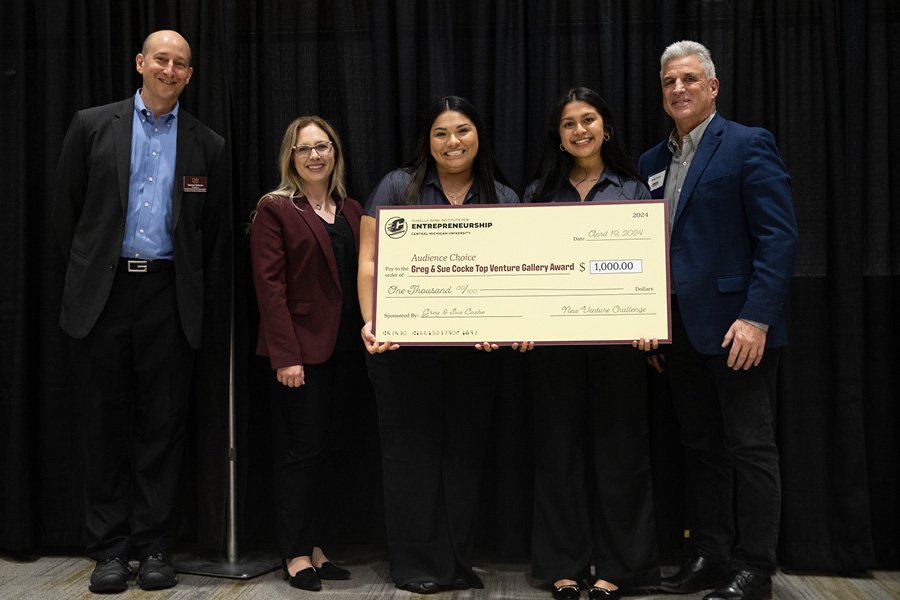
Are you a CMU alum looking to support CMU student entrepreneurs? Learn how you can support or donate to the Entrepreneurship Institute.